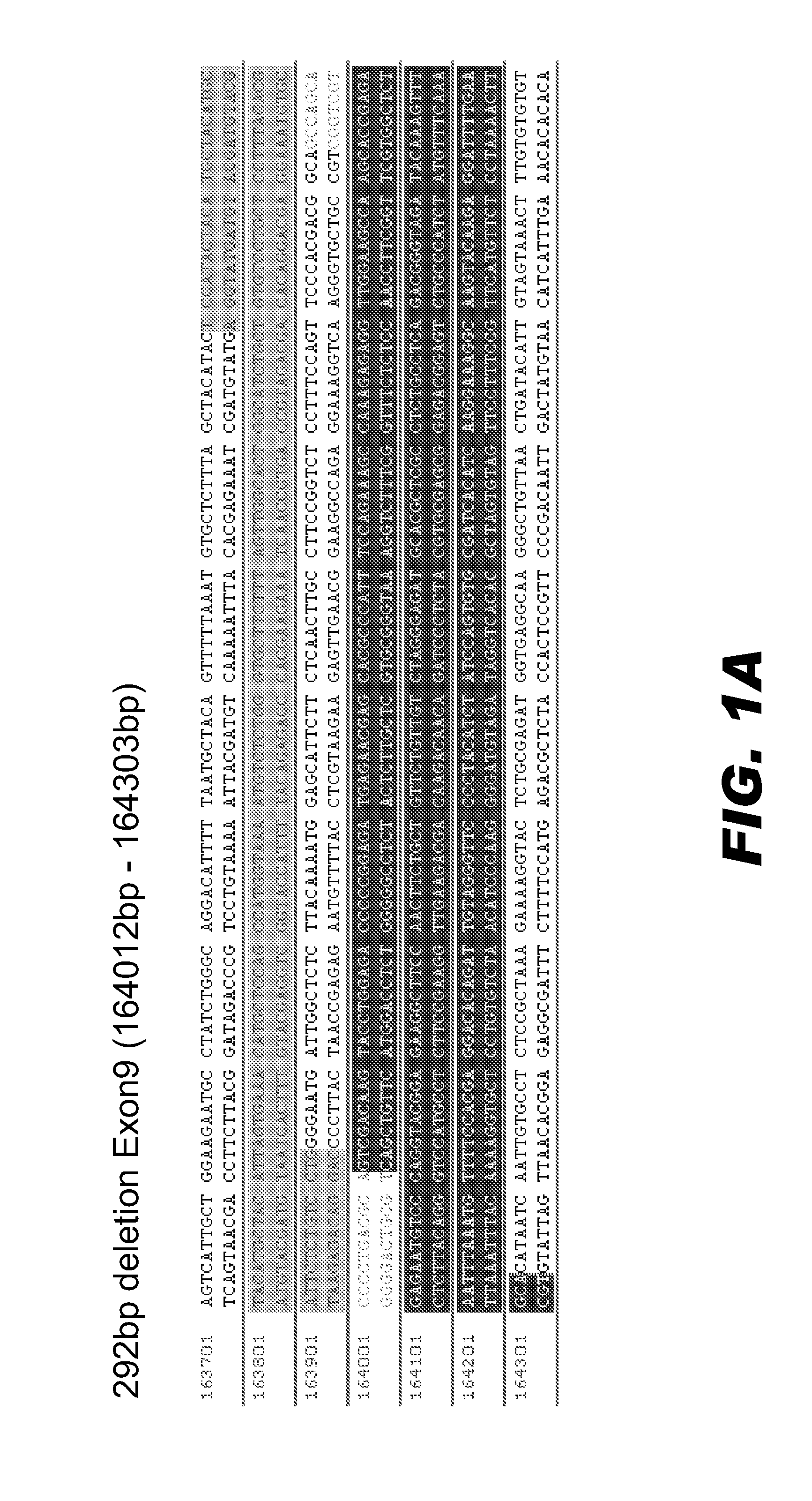Genomic editing of genes involved in alzheimer's disease
a gene and gene editing technology, applied in the field of gene editing of genes involved in alzheimer's disease, can solve problems such as difficult interpretation of memory, poor human response indicator, and difficult translation to human disease and therapy developmen
- Summary
- Abstract
- Description
- Claims
- Application Information
AI Technical Summary
Benefits of technology
Problems solved by technology
Method used
Image
Examples
example 1
Genome Editing of APP Locus
[0103]Zinc finger nucleases (ZFNs) that target and cleave the APP locus of rats were designed, assembled, and validated using strategies and procedures previously described (see Geurts et al. Science (2009) 325:433). ZFN design made use of an archive of pre-validated 1-finger and 2-finger modules. The rat APP gene region was scanned for putative zinc finger binding sites to which existing modules could be fused to generate a pair of 4-, 5-, or 6-finger proteins that would bind a 12-18 bp sequence on one strand and a 12-18 bp sequence on the other strand, with about 5-6 bp between the two binding sites.
[0104]Capped, polyadenylated mRNA encoding pairs of ZFNs was produced using known molecular biology techniques. The mRNA was transfected into rat cells. Control cells were injected with mRNA encoding GFP. Active ZFN pairs were identified by detecting ZFN-induced double strand chromosomal breaks using the Cel-1 nuclease assay. This assay detects alleles of the...
example 2
Genome Editing of ApoE Locus
[0106]ZFNs with activity at the ApoE locus were identified as described above. That is, the rat ApoE gene (NM—138828) was scanned for putative zinc finger binding sites, and pairs of ZFNs were assembled and tested essentially as described in Example 1. It was found that the ZFN pair targeted to bind 5′-aaGCGGTTCAGGGCCTGctcccagggtt-3′ (SEQ ID NO:9; contact sites in upper case) and 5′-ggGATTACCTGcGCTGGGtgcagacgct-3′ (SEQ ID NO:10) cleaved the ApoE locus.
[0107]Fertilized one-cell embryos were injected with mRNAs encoding the active ZFN pair as described above in Example 1. The resultant animals were analyzed as detailed in Example 1. FIG. 2 presents two edited ApoE loci. One animal had a 16 bp deletion in the target sequence of exon 2, and a second animal had a 1 bp deletion in the target sequence of exon 2. These deletions disrupt the reading frame of the ApoE coding region.
example 3
Genome Editing of BDNF Locus
[0108]To identify ZFNs that target and cleave the BDNF locus, the rat BDNF gene (NM—012513) was scanned for putative zinc finger binding sites. The ZFNs pairs were assembled and tested essentially as described in Example 1. This analysis revealed that the ZFN pair targeted to bind 5′-cgGGGTCGGAGtGGCGCCgaaccctcat-3′ (SEQ ID NO:11) and 5′-cgGGGTCGGAGtGGCGCCgaaccctcat-3′ (SEQ ID NO:12) edited the BDNF locus.
[0109]Fertilized rat embryos were microinjected with mRNAs encoding the active ZNF pair and analyzed essentially as described above in Example 1. FIG. 3 presents edited BDNF loci in two founder animals; one had a 14 bp deletion in the target sequence in exon 2 and the other had a 7 bp deletion in the target sequence in exon 2.
[0110]The genetically modified rats were observed for phenotypic changes. Homozygous animals died within 2 weeks of birth. Heterozygous and homozygous animals were smaller in size than corresponding control animals (i.e., derived fro...
PUM
| Property | Measurement | Unit |
|---|---|---|
| Fraction | aaaaa | aaaaa |
| Fraction | aaaaa | aaaaa |
| Fraction | aaaaa | aaaaa |
Abstract
Description
Claims
Application Information
 Login to View More
Login to View More - R&D
- Intellectual Property
- Life Sciences
- Materials
- Tech Scout
- Unparalleled Data Quality
- Higher Quality Content
- 60% Fewer Hallucinations
Browse by: Latest US Patents, China's latest patents, Technical Efficacy Thesaurus, Application Domain, Technology Topic, Popular Technical Reports.
© 2025 PatSnap. All rights reserved.Legal|Privacy policy|Modern Slavery Act Transparency Statement|Sitemap|About US| Contact US: help@patsnap.com



